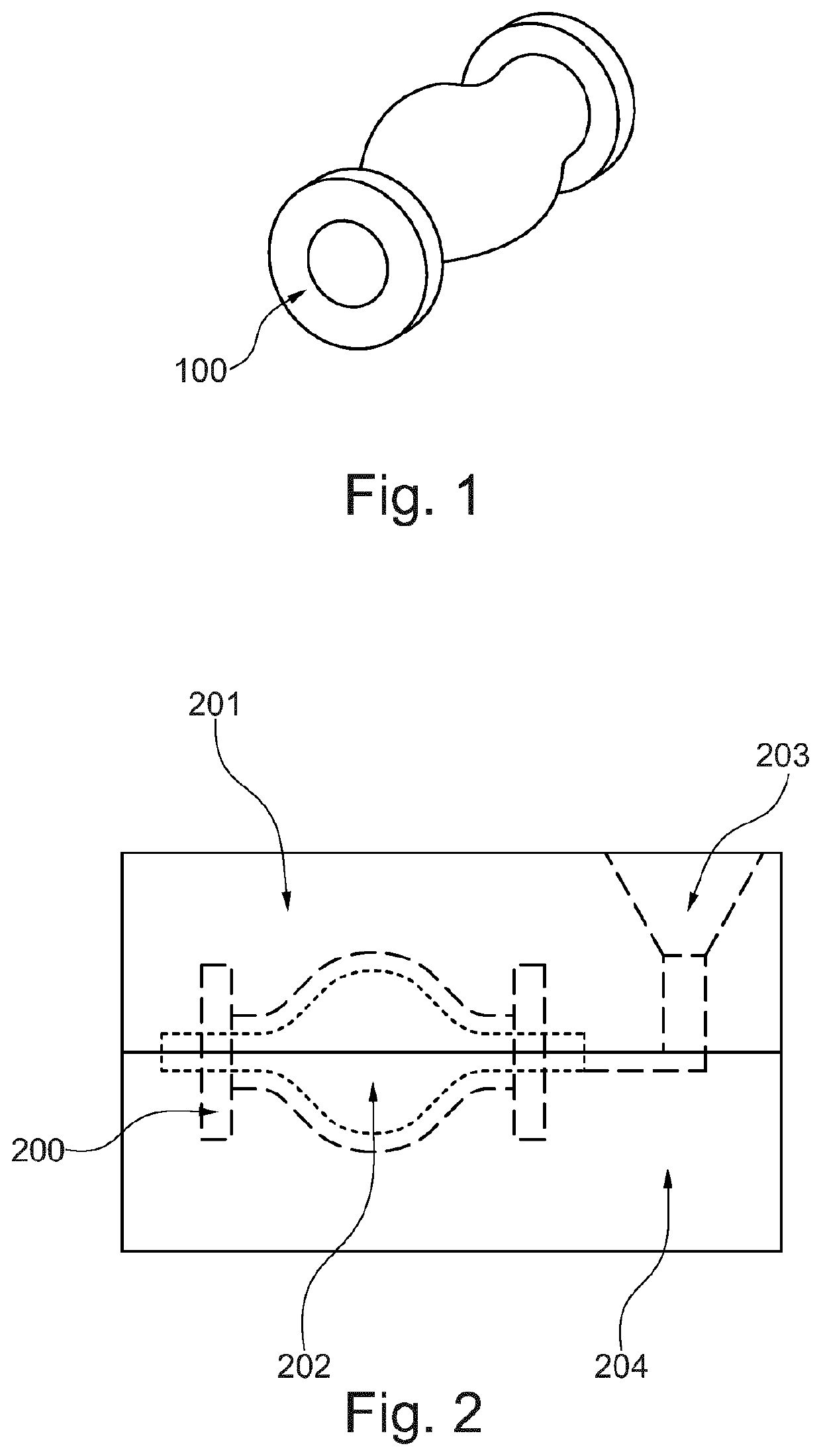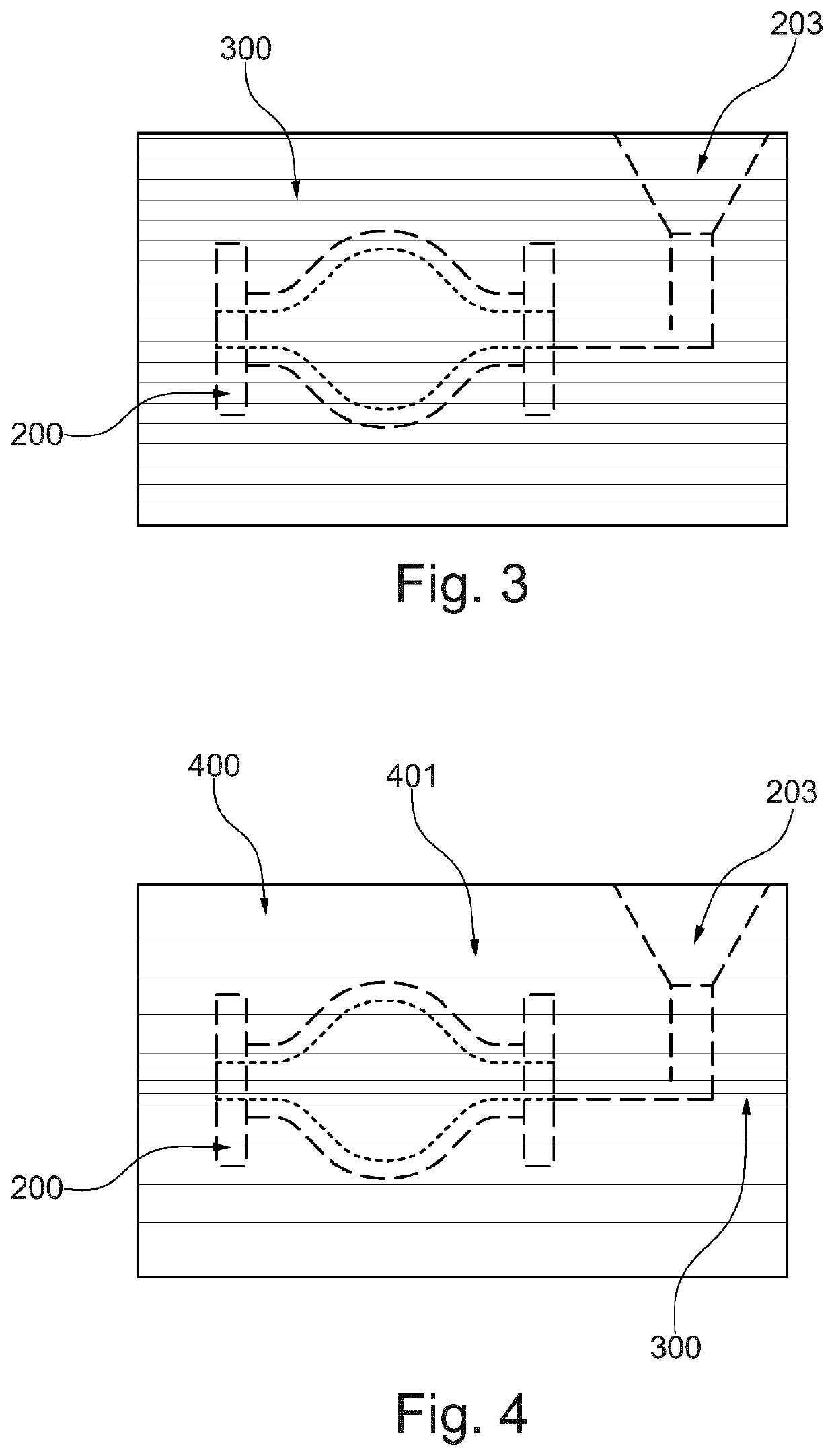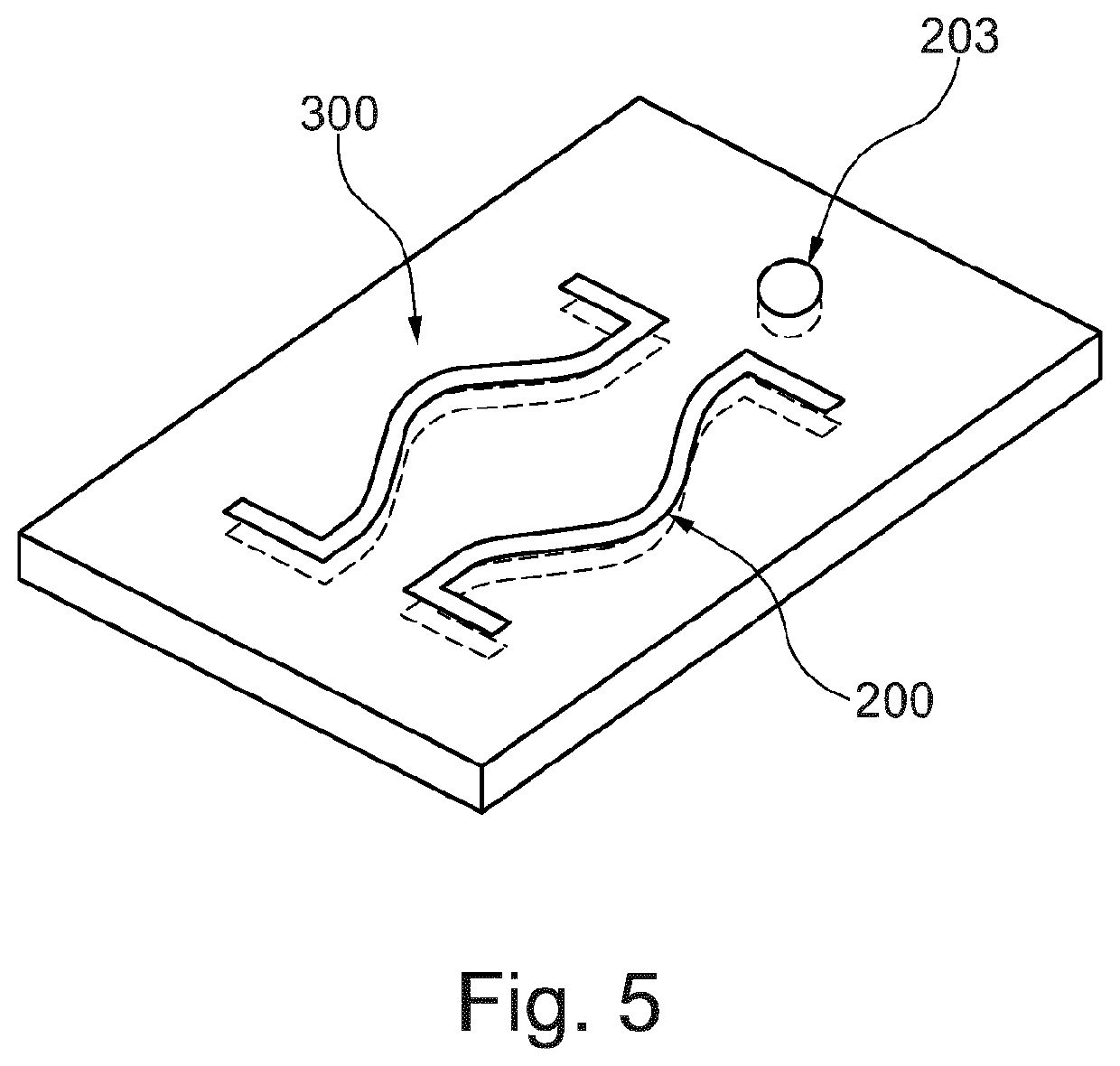Method for producing a casting mold and mold produced using the method
- Summary
- Abstract
- Description
- Claims
- Application Information
AI Technical Summary
Benefits of technology
Problems solved by technology
Method used
Image
Examples
Embodiment Construction
[0105]A bridge geometry over a pond is required for a horticultural project. The treads should be implemented with the aid of boards. The edges to the left and right of the steps are implemented by means of a topology-optimized lightweight structure, with different parts being connected to one another by individual support struts. The installation space of this structure is 900×600×600 mm3. The design of the bridge was calculated using mathematical optimization algorithms and does not exist in the form 201 of a physical model.
[0106]The bridge structure should be made of bronze for aesthetic reasons. A casting process is selected as the manufacturing process due to the very high complexity of the support structures. The foundry commissioned for this project sees the high level of complexity and opts for the method described above based on the favorable cost structure.
[0107]In preparation for the production of the mold, the bridge geometry is placed in a virtual installation space and...
PUM
| Property | Measurement | Unit |
|---|---|---|
| angle | aaaaa | aaaaa |
| angle | aaaaa | aaaaa |
| thick | aaaaa | aaaaa |
Abstract
Description
Claims
Application Information
 Login to View More
Login to View More - R&D
- Intellectual Property
- Life Sciences
- Materials
- Tech Scout
- Unparalleled Data Quality
- Higher Quality Content
- 60% Fewer Hallucinations
Browse by: Latest US Patents, China's latest patents, Technical Efficacy Thesaurus, Application Domain, Technology Topic, Popular Technical Reports.
© 2025 PatSnap. All rights reserved.Legal|Privacy policy|Modern Slavery Act Transparency Statement|Sitemap|About US| Contact US: help@patsnap.com



